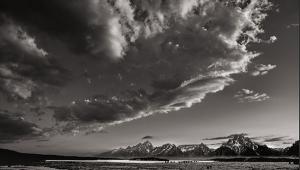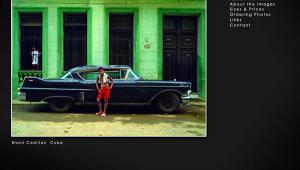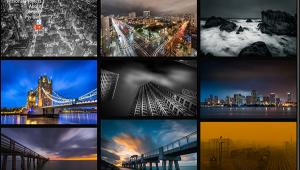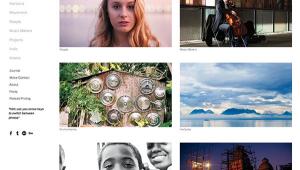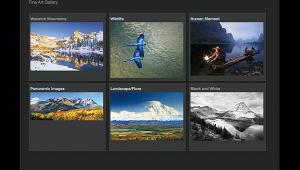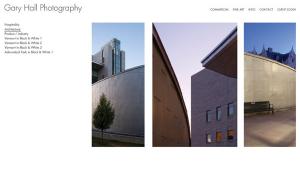Fine Art Photography; Art Is In The Eye Of The Beholder
“Fine art and pizza delivery, what we do falls neatly in between!”—David Letterman
Fine art photography has a special place in my heart since I started photographic studies at the Maryland Institute College of Art in Baltimore. Years later when Mary and I opened our Colorado studio its tag line was “for the art of photography,” but I’m not sure how much art we practiced in those early days. Lately I’m drawn more and more to images of personal expressions and hope to find the time for the artistic side of photography rather than its technical aspects. I could always buy a Holga (heck, I already have one) and soup the film in a mixture of Dektol and Dr. Pepper and make precious little contact prints, but none of the photographers you’ll see here did it that way and neither will I. There is also no reader’s website this month, so please let me know about your site by sending an e-mail to joefarace@gmail.com. No promises that I’ll respond but I will look at every site submitted.
www.briantaylorphotography.com
Brian Taylor is a professor of Art and Design at San Jose State University who works in what I like to call traditional photography. Dig into the Artwork tab on his understated site, especially Art of Getting Lost, and you’ll see what I mean. Here is a series of multiple exposure gum bichromate images printed on watercolor paper. Gum bichromate is a 19th century photographic printing process based on the light sensitivity of dichromates and is capable of rendering painterly images from photographic negatives. Gum printing is traditionally a multilayered printing process, and any color can be used as you will see by the hauntingly beautiful images Taylor creates using several different tonalities, including some, such as Villa Montalvo, that approach what might be called “natural.” But there’s nothing natural about Taylor’s vision and craft which produces images of quiet beauty that appear to harbor secrets, much as can be seen in the work of Clarence John Laughlin.
Jumping into his Archives you will see images of Stonehenge much as the people who built this unique place probably saw in their mind’s eye. Then he applies the same kind of techniques to more mundane subject matter, including “Sisyphus Today” which shows people next to a long line of shopping carts! Shopping carts as art? Why not? His image of the back of people watching television sets titled “This is not Paradise” combines elements of Max Headroom and George Orwell’s 1984 to startling effect. That’s why Taylor’s art can be enjoyed for its brilliant use of technique, beauty, or social commentary. It’s beautiful but makes you think. What more can you ask of art?
 |
|
|
www.vanlieuphotography.com
Van Lieu Photography is located on Nantucket Island where photographers Dirck and Sharon Van Lieu specialize in landscapes and fine art portraiture. They’ve collected an assortment of their work in an elegant and understated website that showcases monochrome images and color photographs that almost leap from your screen. Galleries include Seascapes, Landscapes, Nature, Dunes, and Archives. The Seascapes are what you might expect, tranquil yet with a sense of power and every now and then a geometric sensibility, even if subtle as in “Mise en Scne” where a seabird walks the beach, but also in stronger color images such as “Icy Beach at Smith’s Point.”
The Van Lieu’s powerful Landscape images bounce back and forth between subtle—is this the difference in the two photographers?—to a dramatic use of hit-you-over-the-head color that is never overwhelming but always spectacular! In Nature the focus is on seabirds with the best images being monochrome photographs where those very birds are merely elements in a wonderful seaside interlude. The monochrome images of Dunes are beautifully crafted photographs that are wistful and nostalgic. Similar, yet older, images by the Van Lieus can be found in Archives. If you want to see some of their latest images, visit their blog where some of the Van Lieu’s newest photographs will take your breath away.
 |
|
|
www.kellyfitzgeraldphoto.com
Kelly Fitzgerald specializes in black-and-white landscape photography using manual film cameras, black-and-white film, and the traditional darkroom to produce silver gelatin fiber-based and Type C prints of extraordinary lushness and beauty. Her Recent World gallery includes five series, including one on Colorado, so I peeked inside there first. What she depicts is the state’s wide-open spaces, not the tourist cowboy or skiing images you often see. Some of these images, such as those made near the Sangre de Cristo Mountains, appear to have been made with infrared film and all of the photographs have been crisply rendered with skill and a strong aesthetic sense.
Her Nicaragua series includes some beautiful infrared images made on land but when she takes on seascapes Fitzgerald adds a sense of drama as in her photograph “Lighthouse, Nicaragua.” The A New Discovery series continues the water theme taking you (mostly) to the beaches of Kauai where she ratchets up the level of ambiguity, creating a fantasy world that combines infrared capture and a meticulous eye for photographing subjects using invisible light. Here is a Hawaii that you never see; it’s in monochrome, infrared, and Fitzgerald uses these tools along with her unerring sense of “what’s right” visually to create quiet masterpieces. Navigating all this is done through one of the most elegant and functional websites I’ve seen in a long time.
 |
|
|
www.richardwear.com
Richard Wear is a Canadian photographer whose website mixes his fine art photography with stunning nature and scenic photography. His fine art work is mostly monochrome but there is one color fisheye shot depicting an old-timer behind the counter of an old-school camera store that may not be all that “fine art” but brought a smile to my face for its audacity and realism. The rest are monochrome images done in a style that could only be called retro photojournalism, featuring such oldies but goodies as “Changes” (of a house being moved), “Waiting for Sally” (a very Elliott Erwitt doggie shot), and “DQ at 8th Street” which are both new and old school at the same time. When looking at the images in the au courant Wildlife gallery it almost looks like they were made by a different photographer with lots of shots of bears, including two of polar bears that is as good as this genre gets.
Don’t miss the exciting cowboy images in the Western gallery that are alive with color and motion. The stunning images in his Scenics gallery could only be called fine art. One look at “Bygone Times” and “Iceberg” reveals an inherent and powerful sense of composition and an unerring ability to handle and manipulate light at the same time. Calling these unforgettable photographs “Scenic” may be an example of Wear’s humility, but you don’t have to be humble when you can make these kinds of extraordinary images.
 |
|
|
